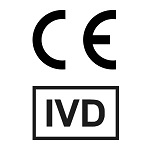Coverslips are essential components in microscopy, providing protection for specimens while enhancing image quality. Among the various types of coverslips, circular coverslips are particularly valued for their versatility and compatibility with multiple microscopy techniques. This overview discusses the features, applications, and best practices associated with circular coverslips.
What Are Circular Coverslips?
Circular coverslips are thin, round pieces of glass or plastic designed to cover specimens on microscope slides. They are available in various diameters, typically ranging from 12 mm to 25 mm, and are manufactured from high-quality optical materials such as borosilicate glass. These coverslips provide excellent optical clarity and durability, making them suitable for applications in histology, pathology, and biological research.
Key Features of Circular Coverslips
- Optical Clarity: Made from high-quality glass, circular coverslips allow for clear visualization of specimens under various microscopy techniques, including brightfield, phase contrast, fluorescence, and confocal microscopy.
- Thickness Options: Common thicknesses include #1 (0.13–0.16 mm) and #1.5 (0.16–0.19 mm), which are crucial for achieving optimal focus and minimizing optical aberrations.
- Non-Stick Treatment: Many circular coverslips come with a special anti-adhesive treatment that prevents them from sticking together, facilitating easier handling and application.
- Compatibility: Designed to fit standard microscope slides seamlessly, they can be used manually or with automated gluing machines for efficient processing.
Applications of Circular Coverslips
- Specimen Protection: They provide a barrier against contamination and physical damage during observation, ensuring the integrity of the sample.
- Even Pressure Distribution: The flat surface of circular coverslips distributes pressure uniformly across the specimen, reducing the potential for distortion or optical aberrations.
- Sample Preservation: By sealing specimens with an appropriate mounting medium under a circular coverslip, samples can be preserved for extended periods without drying out.
Best Practices for Using Circular Coverslips
- Selection: Choose the appropriate diameter and thickness based on the specific microscopy technique and sample type to ensure optimal results.
- Cleanliness: Ensure that circular coverslips are clean and free from dust or contaminants before application to avoid artifacts in the microscopic image.
- Application Technique: Apply coverslips carefully to prevent air bubbles that can interfere with image quality.
- Storage Conditions: Store circular coverslips in a clean, dry environment to maintain their integrity and prevent damage.



